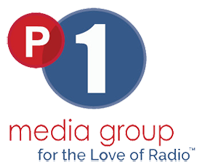22 Apr The Burn Factor

THE EVOLUTION OF MUSIC RESEARCH
Radio programmers know how important it is to understand the wants and needs of their target audiences as they go about building a station. If they play the right songs, listener satisfaction grows, listening occasions go up and the station becomes more successful.
But how to find out what listeners want? One of the early techniques, developed more than 40 years ago, was the “auditorium music test,” in which subjects are recruited to come to a location and give their opinions on songs that programmers were playing over the air. Over time, shortcomings with that methodology became apparent.
Today it is far more difficult, sometimes even impossible, to find and recruit the right respondents to participate in an auditorium test. As a result, recruitment costs and incentives have skyrocketed — in some major markets the costs can exceed $250 per person.
The problem is the pool of people willing to participate is very small and getting smaller by the day. Many auditorium test participants are research pros, which means they are in the database of one or more of the local fieldwork agencies, and frequently participate in any and all types of research.
RESEARCH GOES ONLINE
With the emergence of the internet as a vehicle for interactions between programmers and listeners, many researchers sought to replicate the auditorium test online. The Online Music Test, or OMT, marked the next stage of development in music research. Its popularity grew because it produced useful results for a lower cost than in-person testing — typically around 30 percent less.
Further, researchers believe they’ve resolved the security fears and concerns about who was actually taking tests.
THE NEXT STEP
Nevertheless, such music research is a luxury many stations can no longer afford. This is a problem that can now be addressed through the power of “The Crowd”. Utilizing multiple sources of participants including targeted social ads, station databases, digital advertising, and various other crowd sourcing techniques, low cost, high participation, high quality research is now possible.
HOW DOES CROWD SOURCING WORK?
Listeners can be recruited in a variety of ways. Test recruits can include a combination of databases, social media campaigns, on-air ads and other crowdsourcing techniques, and they don’t know which station(s) they’re giving their opinions to.
Today, music testers aren’t primarily motivated by incentives to participate. Participants are willing — even eager — to share their recommendations and opinions online, much as they do for TripAdvisor, Yelp and Netflix.
This solves the issue that many have become very concerned about: Most in-person respondents are professional opinion givers. It’s a very small group of people the local fieldwork agency has identified to be reliable participants for any and all types of research.
To avoid this narrowing of the sample, Crowd Sourcing increases the pool of participants while minimizing the impact of research pros on the results.
Another advantage of the Crowd Sourcing is it delivers a much larger sample, with the vast majority participating because they want to share their opinions about two subjects they are deeply passionate and opinionated about, music and radio.
ONLINE IS HERE TO STAY
While the days of auditorium music testing are numbered, online music tests are certainly here to stay and using the power of The Crowd is clearly the next step providing larger samples and reduced cost.
Both produce excellent results when executed with the proper know how and care and they’ll help with the budget too.

No Comments